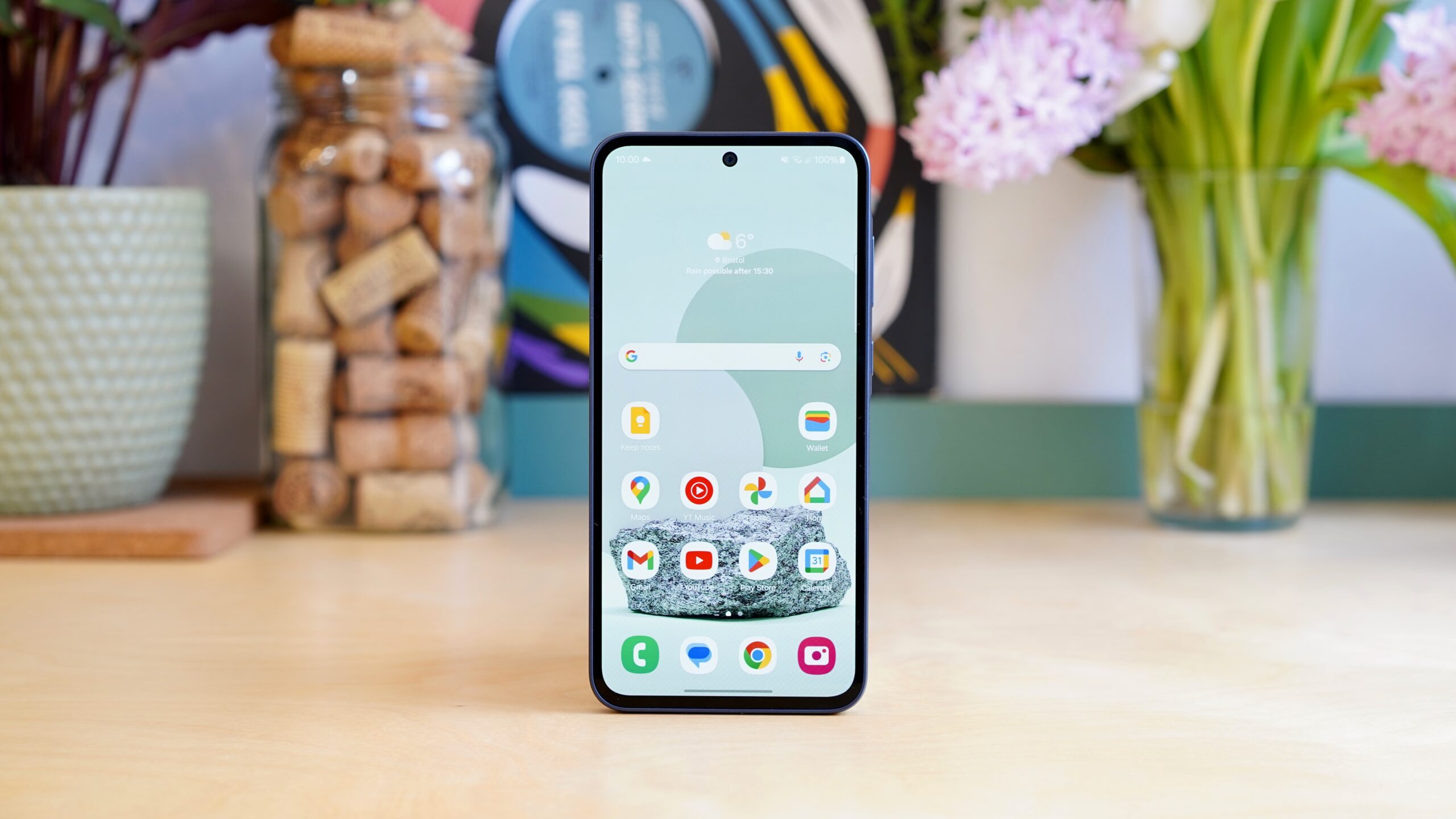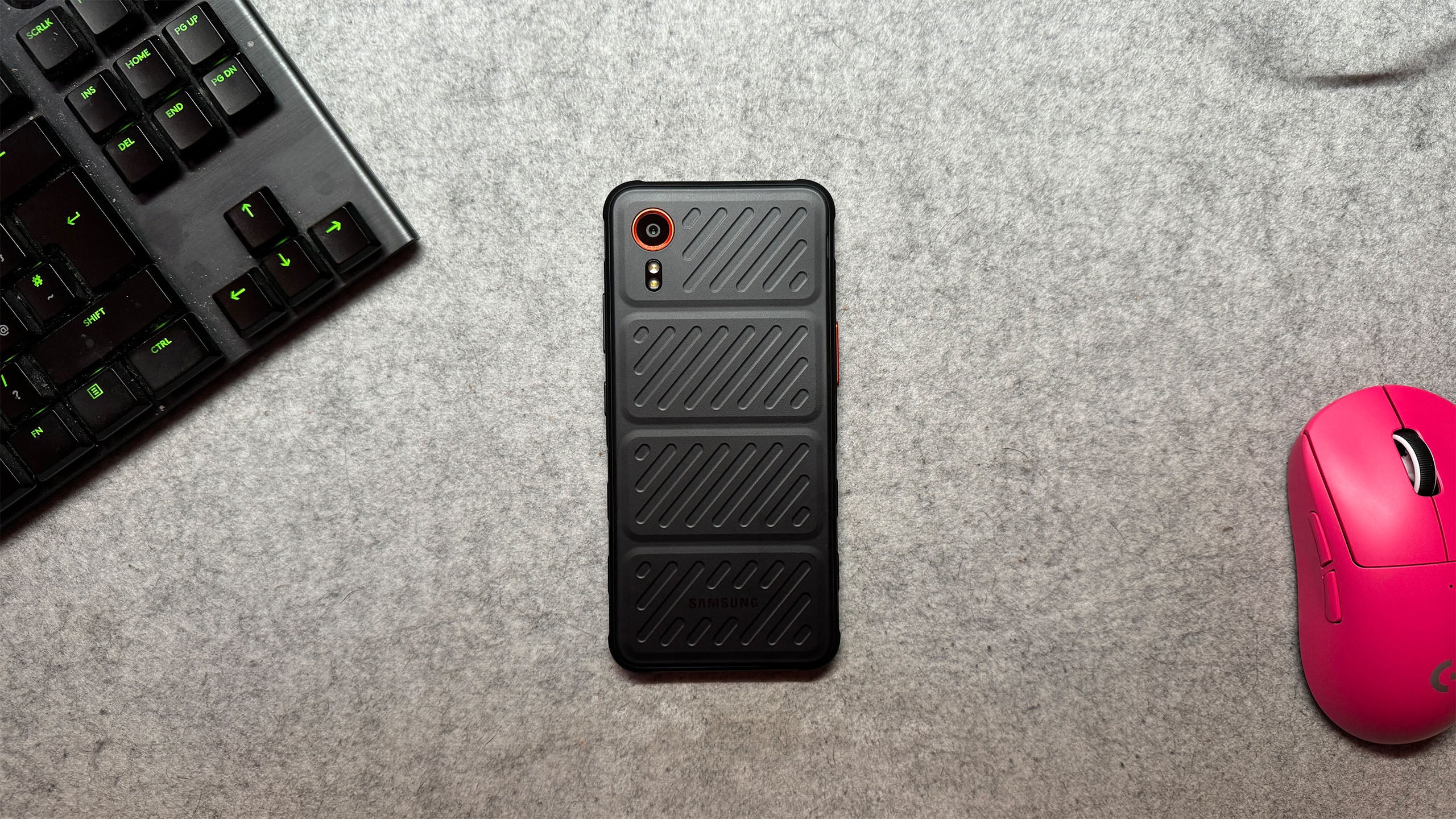Google Pixel 8 Pro Review
Google's most interesting phone yet



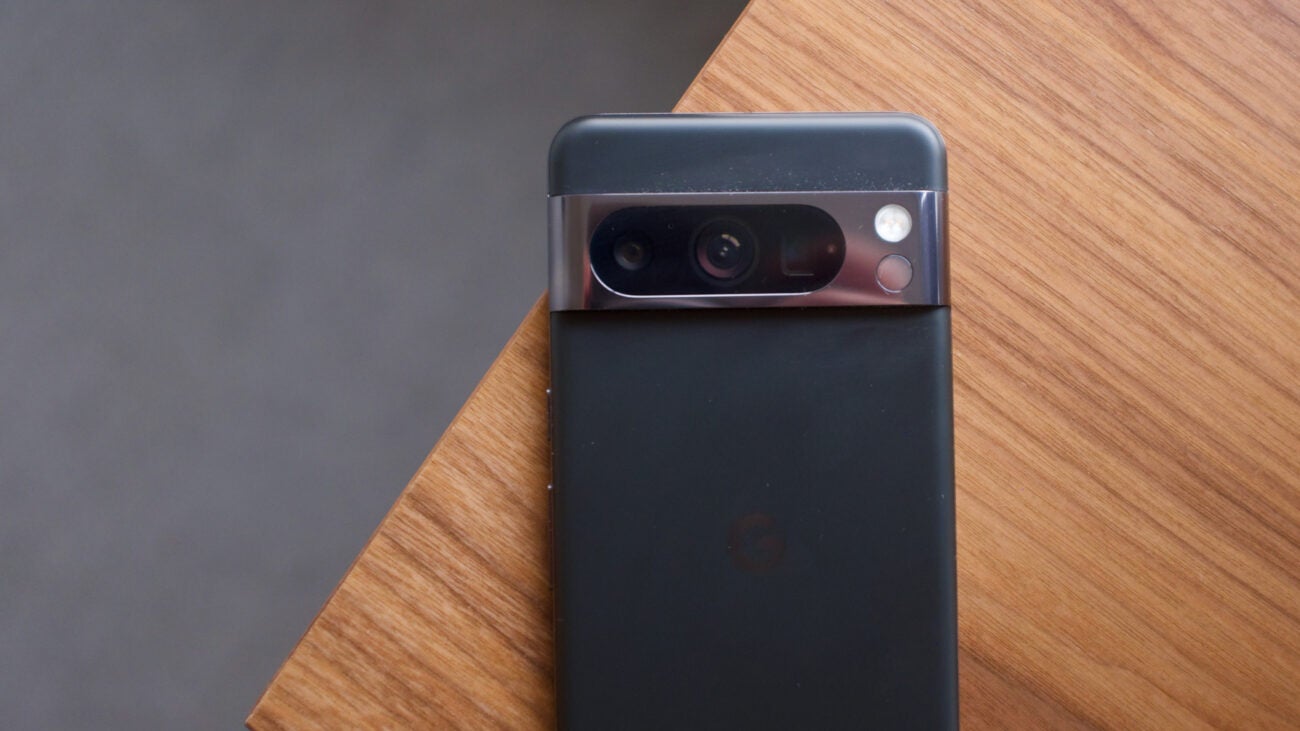



Verdict
Bursting with clever AI-infused software, the promise of software updates for many years to come and a camera and screen that thoroughly impress, the Google Pixel 8 Pro does a fantastic job at offering prospective buyers something a little different.
Pros
- The bright, flat screen is stunning
- Often incredible camera performance across all sensors and lenses
- AI features offer unique software tricks
- 7 years of updates
Cons
- Uncomfortable to hold
- Temperature sensor is pointless
- Performance not as strong as similarly priced phones
- Notable price increase over 7 Pro
Key Features
- Tensor G3Google’s chip focusses on strong AI performance and powers many of the phone’s most unique features
- AI-infused softwareThe sheer breadth of the AI features found in the software is impressive
- Three impressive camerasThree high-resolution cameras capture detailed, wonderfully processed images
Introduction
The Google Pixel 8 Pro is a high-end Android smartphone that, even with the introduction of competing GenAI-powered phones like the Samsung Galaxy S24 Ultra, can still do plenty of things you won’t find from the competition.
The Pixel 8 Pro turns frowns into smiles in photos, removes unwanted background audio in your videos and can even completely change the size of a subject in an image. Even bad photos taken with Google’s new flagship can be turned into something much better afterwards.
This is the first phone to really focus on AI throughout, from the camera to the software. Newer phones like the Samsung Galaxy S24 also focus on AI, but none are quite as feature-packed as Google’s option. It has been doing this for years at this point, after all.
Design
- Three fairly dull colour choices
- Can be uncomfortable to hold
- Matte rear is welcome
In a similar move to recent phones from Apple and Samsung, Google has tweaked an existing design for the Pixel Pro 8 rather than completely reinventing it. Google has been using this look since the Pixel 6, and while it felt modern before it is starting to get a little stale. The Pixel 9 Pro needs a refresh next year.
It’s a well-built phone though, with a glass and metal body and the welcome IP68 rating for protection from dust and splashes of water.
There’s a lot to really like about the Pixel 8 Pro; however, the phone’s weakest points are its general design and ergonomics. Google has also failed to address some of the biggest issues with the overall Pixel design it has developed over the last few iterations.
For instance, the phone retains the camera visor that has been present since the Pixel 6. This is a bar that runs across the rear, housing all the camera sensors in a generally tidy area. Thanks to a flat top and bottom, this bar remains a shelf for dust to stick to whenever it’s in a pocket. As we mentioned in our Pixel 8 review, the camera bar also protrudes enough to snag on jeans constantly when pulled out of a pocket.
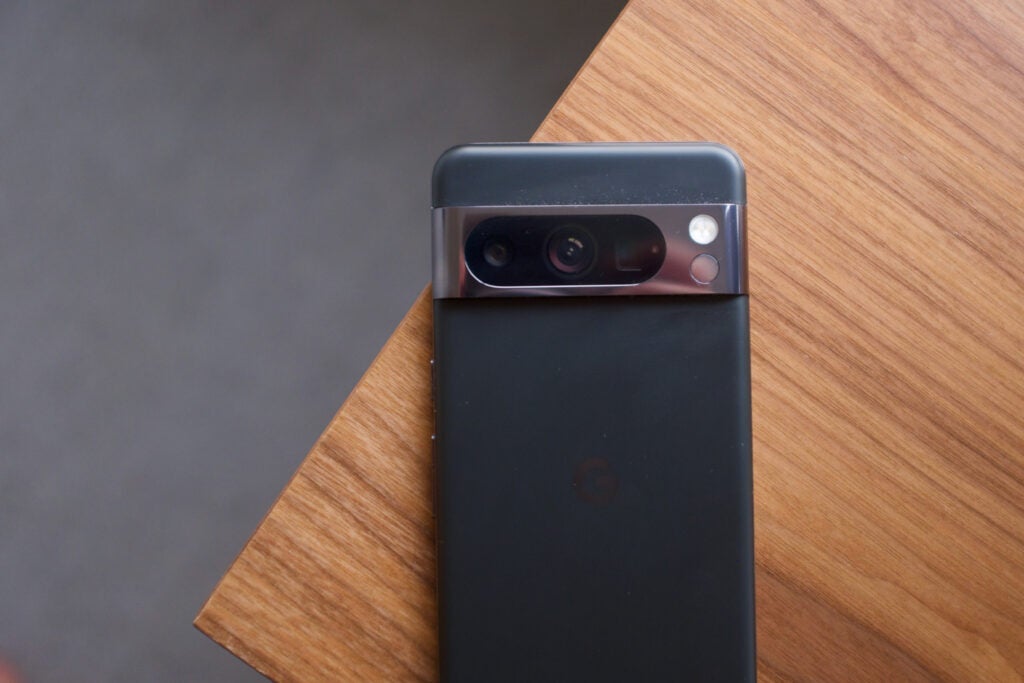
This might seem like a small issue, but it’s one that shows there’s a lack of focus when it comes to the design of the Pixel 8 Pro. These issues have been noted for years, without any changes being made to improve usability.
I’ve also found the phone uncomfortable to hold for extended periods. At 213g it’s not particularly heavy, yet it feels very top-heavy with a lot of weight centered around the thick camera. Even though the iPhone 15 Pro Max weighs not far off 10g more, I’d say it feels like a lighter phone. The edges of the Pixel are sharp too, even if the sides are rounded off around the back. It all adds up to a phone that takes a while to get used to using.
On a more positive note, Google has switched the previously glossy back to a satin finish that does a fantastic job of reducing the appearance of fingerprints and smudges. Oddly, this design trait is missing on the smaller Pixel 8, which retains the very glossy finish.
Screen
- LTPO screen goes from 1Hz to 120Hz
- Exceptional levels of brightness
- Fantastic HDR performance
The Google Pixel 8 Pro’s 6.7-inch 2992 x 1344 OLED is stunning. It’s one of the best displays I have used on an Android phone, and it’s a notable upgrade over the Pixel 7 Pro in a few important ways.
Google has called the screen a Super Actua display – because everything needs a name these days. It refers to the high brightness levels the phone can reach, upwards of 2000 nits in certain instances, although that’s not quite on the same level as the Honor Magic 6 Pro’s 5000nits max brightness.
Still, the added brightness helps most with outdoor visibility, making the screen comfortable to read in all conditions that I have been able to test it in. The Super Actua display benefits from HDR playback too, putting it on par with the iPhone 15 Pro Max in my tests and comfortably ahead of anything else.
The LTPO panel can now reduce the refresh rate all the way down to 1Hz, rising to a maximum of 120Hz to make scrolling and certain games feel smoother. You don’t get this adaptive LTPO tech on the smaller, cheaper Pixel 8 which instead uses software to judge whether to refresh at 60Hz or 120Hz.
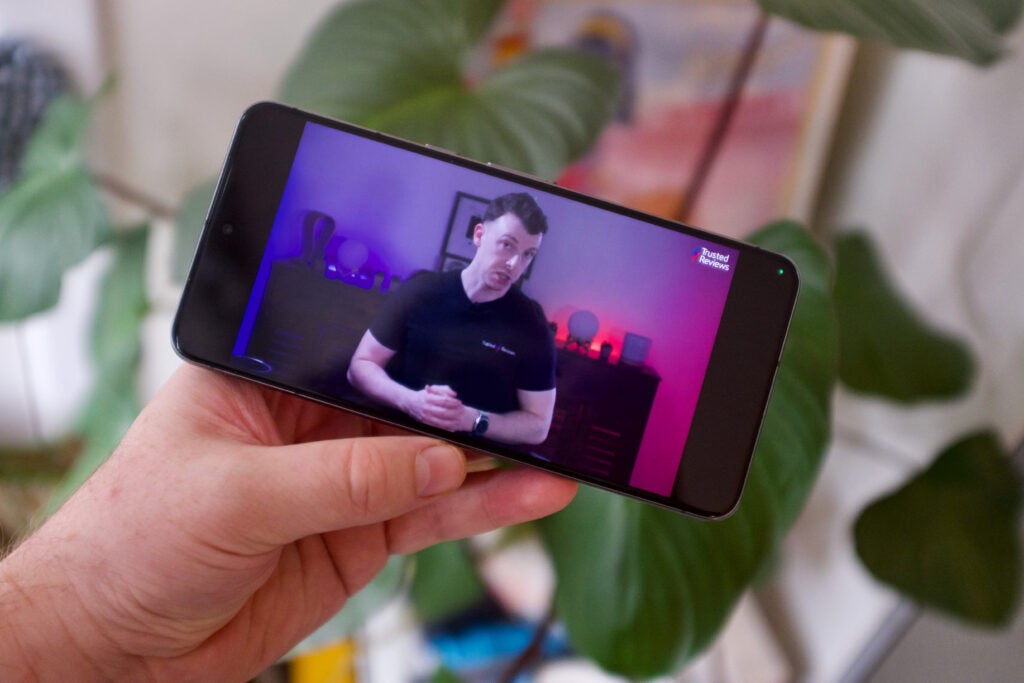
I’ve mentioned the switch to a flat screen previously, however, I have to commend Google again for making the change. Ditching the curves makes the screen easier to use when gaming and it reduces annoying reflections on the edges. It’s also just far more immersive when watching Netflix or YouTube, as none of the image is relegated to the edges.
Camera
- Three impressive rear cameras
- Loads of AI features included
- Improved video
Google has set its Pixel phones out from the crowd with their cameras since the very beginning and nothing has changed with the Pixel 8. Thanks to some welcome sensor upgrades, a bevy of software tweaks and a much smarter app, the camera experience here is fantastic. It’s up there with the best camera phones on the market in 2024.
The trio of cameras on the back contain a main 50MP octa-PD camera with a wide f/1.68 aperture and a large 1/1.31-inch sensor, alongside a 48MP telephoto with 5x optical zoom and a 48MP ultrawide, complete with autofocus. Google hasn’t skimped on any of these cameras and they all take impressive shots.

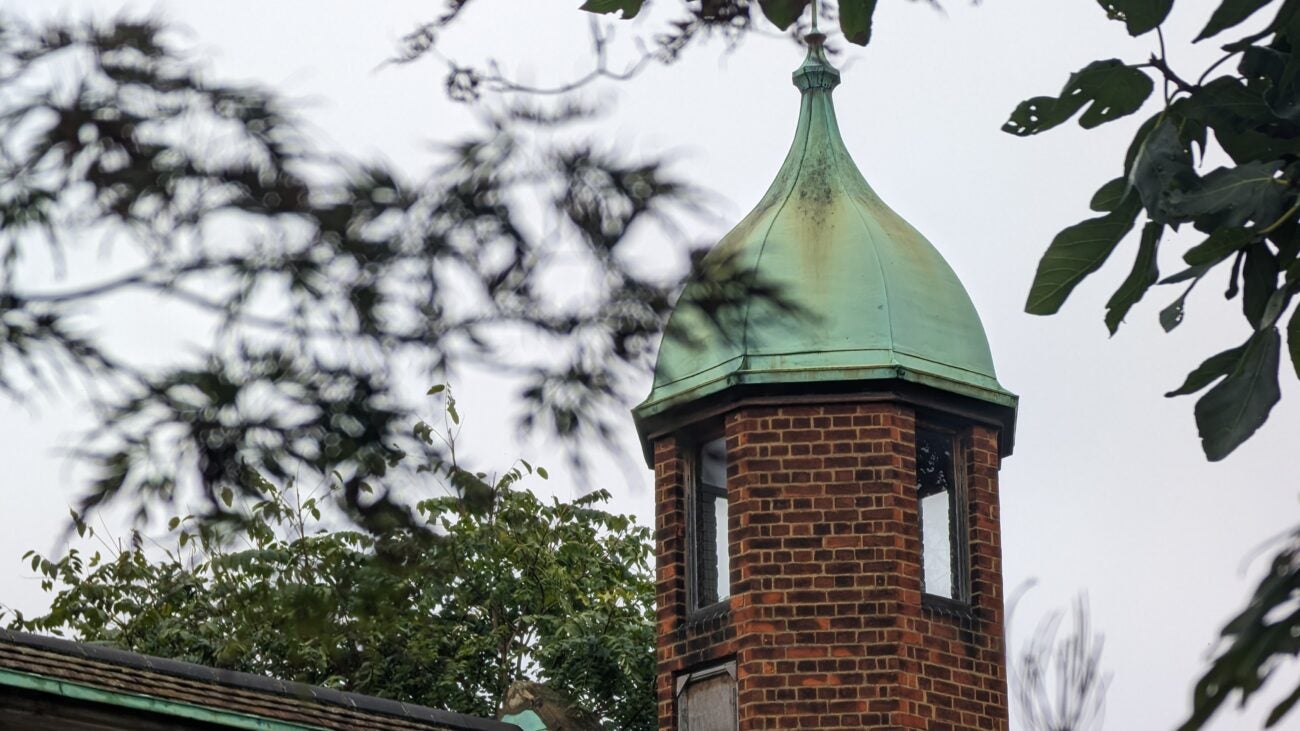

Shots from the Pixel 8 Pro have that characteristic Pixel look, which I absolutely love. Highlights are pushed to create striking images, with colours that are restrained yet still accurate and vibrant. Shots aren’t quite as cool as those from the 7 Pro, with warmer hints throughout.
The way the camera produces skin tones is unmatched in the smartphone space and even though it is still capturing 12MP images there’s a huge amount of details retained, especially in fur.

A lot of people love the way Samsung flagships and recent iPhones pump up the colours, and there’s nothing wrong with this – however the more subtle nature of images from the Pixel 8 Pro give them a more professional look. A lot of this is down to personal preference though.
The Google Pixel 8 Pro works impressively when the light diminishes, though images are better when there is some light. There’s no wild night mode here that makes taking pictures in pitch black doable, but most shots I have taken at night are usable, with nice colours and plenty of detail.

When switching to the zoom and the ultrawide camera, there’s often a noticeable shift in colours that the software then tries to revert. This can be jarring, especially when you’re jumping in 5x, as the image you’re seeing jumps around before it settles.
Images from both secondary cameras are great and it’s welcome to see the ultrawide treated with a high-resolution sensor, rather than being an afterthought. The zoom skills might not match the Galaxy S24 Ultra for range, but the 5x zoom gets you close enough to a subject and plenty of detail is retained. I’ve been using this camera a lot over the past few weeks.

Video capture on the Pixel 8 Pro is an improvement over the Pixel 7 Pro. Colours are better matched across the photos and videos now, meaning you get those wonderful colours and skin tones. Things take a turn at night, when the stabilisation adds odd panning effects and noise becomes very common.
The actual camera hardware is arguably the least interesting part of this camera with Google focusing a lot on updates and additional features added to Google Photos and the Camera app itself.
The Camera app, for instance, is laid out in a much smarter way now. You can now easily switch between Photo and Video, with each having dedicated settings and options in a separate area. A small change, but it makes so much sense to have these two options separated out.

There are also a bunch of extra camera controls on the Pixel 8 Pro. none of which make their way down to the Pixel 8. Once opened, these manual options include control over the shutter speed, ISO and white balance. Delve deeper and there’s an option to force the phone into Night Sight mode and to only use the telephoto camera when zooming at night. All this is very welcome and allows those who want to take more manual control the opportunity to do so.
What really sets the Pixel 8 Pro’s camera apart from the other phones on the market are the AI skills in both the Camera app and inside Google Photos. Some of these aren’t quite ready yet – the Video Boost feature which will brighten up nighttime video footage – but there’s plenty to play around with.
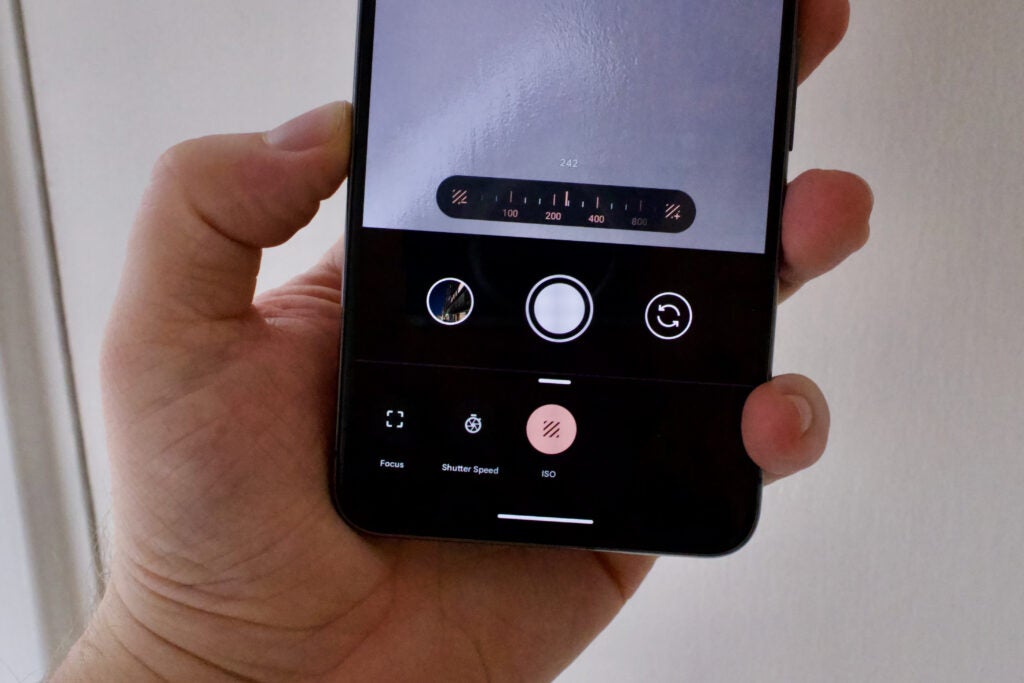
Magic Editor uses generative AI to replace huge parts of an image you’ve taken. Snapped a shot of blue sky? Magic Editor can turn that into a grey one. Captured a street full of cars? Magic Editor can make it look completely empty. I turned my small dog into a much larger one who took over an entire room, dwarfing the furniture, in just a few taps. It can be hit or miss, and sometimes it doesn’t work at all, but when it works it requires a double take.
I did just as many double takes using the Best Take feature. This works when you take a bunch of photos of either a single person or a group and their facial expressions aren’t quite what you want. Best Take looks at all the photos you’ve shot and offers up an alternative facial expression that it’ll impose over the original image. In well-lit situations, it works very well – almost too well, although it can often struggle to get the position of the neck quite right.
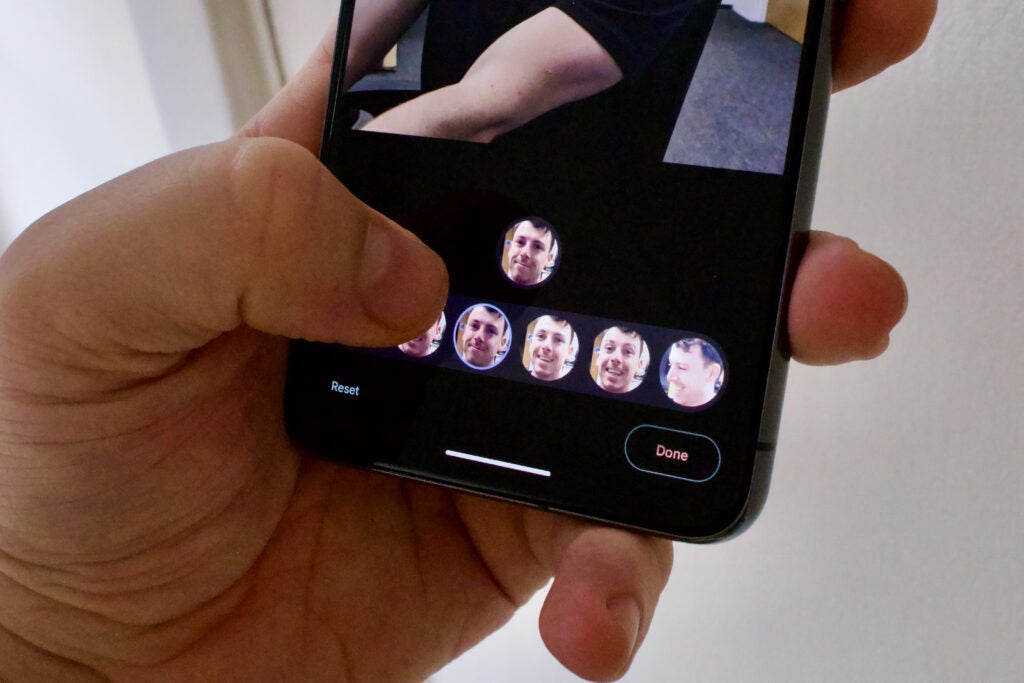
I can imagine this feature will be used a lot by parents, who struggle to get multiple kids all grinning at once. Still, it does feel odd to me, especially when you’re swapping out whole expressions – turning someone who was sad during a conversation, for instance, into one who is happy and grinning. It makes me uneasy, and this is just the start.
Performance
- Tensor G3 chipset
- 12GB RAM, up to 1TB storage in some regions
- The temperature sensor feels like an odd addition
While Apple has made the change in recent years to differentiate the chipset used between its Pro and standard devices, Google has continued to use the same in both. That means whether you go for the Pixel 8 or Pixel 8 Pro you’re getting the same Tensor G3 chip.
The Pro model does benefit from more RAM: 12GB of LPDDR5X RAM rather than 8GB, and a maximum internal storage capacity of 1TB. This 1TB model seems very region-specific though, with the UK models maxing out at 512GB.
In keeping with the previous Tensor chips, the G3 continues Google’s focus on AI skills rather than pushing performance and general speed as key features. Most of the clever generative AI camera features are made available by this chip, as are the improvements to the translation and call screening skills.
The Pixel 8 Pro’s lack of pure power is most obvious in our suite of benchmarking tests, which put Google’s £999/$999 device on par with devices running the Snapdragon 8 Plus Gen 1 rather than those running Qualcomm’s GenAI-infused Snapdragon 8 Gen 3 chip.
After using the phone for a week, I was initially very worried about the performance. I don’t usually put much sway into benchmarks, but I was getting terrible lag everywhere for the first few days, with even basic apps struggling to keep up. After the first week, there was a noticeable change and everything became much smoother – a further week on the Pixel 8 Pro and it feels fast in everyday use.
Gaming performance still falls behind similar-priced phones. I noticed multiple dropped frames in intensive titles (Genshin Impact and COD Mobile) and there’s slowdown in top-down titles like Survivor.io. Everything remains playable, just not to the levels found on high-end options running the Qualcomm 8 Gen 3 like the Samsung Galaxy S24 series, OnePlus 12 and Honor Magic 6 Pro.
My colleague Lewis had the same issue with the Pixel 8, so I would recommend anyone picking up either of Google’s new phones to keep this in mind for the first few days and stick with it even if performance seems disappointing.
Google has added some welcome additions, like Wi-Fi 7 support, Bluetooth 5.3 and there’s an ultra-wideband chip for spatial orientation. There’s also an excellent speaker onboard, easily the best I have heard on any Pixel phone.
The most unique of all the sensors on the Pixel 8 Pro is the temperature sensor, situated underneath the flash and next to the cameras. Open up the Thermometer app on the phone, point the phone at either a solid object or a liquid and it’ll read the temperature. I’m not really sure who this is for, as anyone who needs to measure the exact temperature of something likely already has a tool they know is accurate. This just feels like a gimmicky addition we’ve seen before on Pixel phones that’ll disappear next year, never to be seen again.
Software
- Updates for years to come
- AI-infused everything
- Clean build of Android 14
While the performance of the Pixel 8 Pro isn’t anything standout, Google has tuned the Tensor G3 to focus more on AI performance and that is very noticeable throughout the software.
Google has been adding numerous AI-fuelled features to its Pixel phones for years now and many of them have become some of my favourite Android additions. The handy Now Playing skill, for example, keeps track of any song playing in the background, highlighting them on your lockscreen and adding them to an ever-updating list.
The Recorder app is the best it has ever been too, accurately transcribing voices on the device while separating out different voices and letting you search through the recordings. Then there’s the call screening feature that filters out and, in some regions, answers spam calls without you having to. It’s these features that really make the Pixel such a fun phone to use and own.

Of course, it was also the first phone to be released with the Android 14 update, though it’s available on many alternatives in early 2024. There’s a smattering of new features here, including some added lock screen customisations, and a generative AI wallpaper tool that builds unique choices depending on what prompts you feed it.
Easily the standout software feature for the Pixel 8 Pro is the seven years of support Google is promising. This isn’t just security updates, but proper system updates and Pixel Feature Drops too. This means if you pick the phone up today, you’ll get updates until Android 21 – a promise only matched by Samsung with its S24 series.

While I am sure not every feature of all these upcoming software updates will be compatible with the Pixel 8, it’s impressive to see Google promise to support it for so long.
Battery Life
- No charger included
- USB-C port
- Wireless charging
Pixel phones have been hit or miss with battery life a lot of the time. Some models have impressed, however usually it’s the poor performers – notably the Pixel 4 – that stick in the memory.
I’ve had no such trouble with the Pixel 8 Pro – words that will likely come as a relief to many. The 5050mAh battery is the standard I have come to expect from high-end, large Android phones and the Pixel 8 Pro competes well.
I have been averaging five to six hours of screen time on busy, heavy-use days – taking me comfortably from an 8:00 alarm to bedtime at midnight. Typically I have found myself with 20-25% left at the end of the day, enough to get me to the office the next day if I forgot to charge.
Lighter users should get past lunchtime on day two, and there are a couple of battery-saver modes to push things forward.
There’s no charger included in the box, just a USB-C to USB-C cable, and I would recommend picking up a plug capable of outputting at 30w. Using a charger with these specifications, it took me 87 minutes to get a full 0-100% charge and 39 minutes to go from 0-50%.
These results are almost exactly on par with the iPhone 15 Pro and Samsung Galaxy Z Fold 5, however it is noticeably slower than some of the recent releases from brands like Xiaomi, Oppo and OnePlus. The Xiaomi 13T Pro, for instance, gets a full 100% charge before the 8 Pro reaches 50%.
Wireless charging remains at 18w and there’s reverse wireless charging too, which is handy for topping up the juice on a pair of Qi-enabled earbuds.
Latest deals
Should you buy it?
You should buy if you want full control over photos
The Pixel 8 Pro has three very capable cameras and the ability to tweak and, at times, completely alter your photos after they’ve been taken.
You shouldn’t buy if performance is key
The Pixel 8 Pro isn’t slow, but it does lag behind some of the best Android phones at this high price. If gaming prowess and a speedy CPU is key, look elsewhere.
Final Thoughts
The highest praise I can give the Pixel 8 Pro is that it does an impressive job of standing out from the swathes of Android phones on the market.
Moving the focus from speed and performance to building a chip designed to improve AI performance gives the Pixel 8 Pro a unique selling point, even in 2024 where the likes of Samsung are offering their own GenAI-powered features. The Pixel’s AI offering is just much more rounded than the competing Galaxy AI.
The biggest reason to pick up a Pixel remains the photography skills and the three cameras on the back all take great snaps in varying conditions. There’s no dramatic improvement this time, and in certain situations, the Xiaomi 13 Pro, iPhone 15 Pro and Samsung Galaxy S24 Ultra take better pictures. Yet, I still love shooting with a Pixel, thanks to the stunning colours and striking images each sensor produces.
There are a few misses here that stop this from being the very best phone you’ll find. The design is dull and needs a refresh next year, with more of a focus on comfort and weight distribution.
Gimmick features like the temperature sensor don’t add much either, and the hefty price increase, especially in the UK, is hard to swallow.
How we test
We test every mobile phone we review thoroughly. We use industry standard tests to compare features properly and we use the phone as our main device over the review period. We’ll always tell you what we find and we never, ever, accept money to review a product.
Used as main phone for more than a week
Taken hundreds of photos in various conditions
Compared against the competition
FAQs
There’s a cable included, just no charging plug.
There are three colours: Obsidian (black), Bay (blue) and Porcelain (white).


